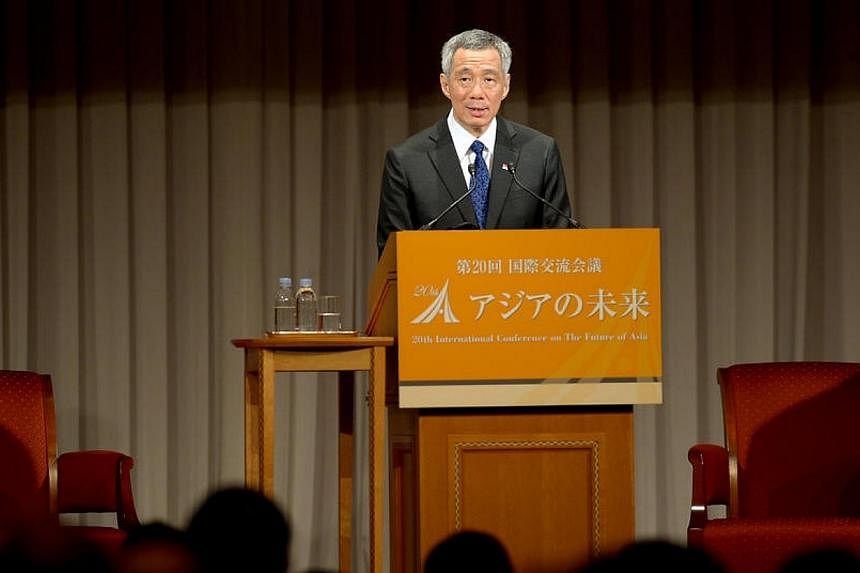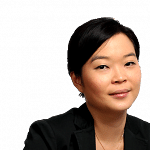What will Asia look like in 20 years? The United States will continue to be the world's top superpower, while China's economy will be three to four times larger with commensurate growth in its political and military might, and Japan will remain a force in the region to be reckoned with, Prime Minister Lee Hsien Loong said on Thursday.
Speaking in Tokyo at the 20th International Conference on the Future of Asia, better known as the Nikkei conference after its organisers Nikkei Inc and the Japan Center for Economic Research, Mr Lee sketched out two scenarios that could arise in the region in 2034 - one positive, the other less so.
The first scenario is a peaceful Asia, he said at the conference, which was held at the Imperial Hotel with the theme of "Rising Asia: Messages for the next 20 years".
Describing such a situation, he said countries would work together "to advance shared interests, while competing peacefully with one another".
The US would maintain its "rebalance towards Asia" as new presidents are elected, and engage the region in not just security matters but also "trade, investments, education and people-to-people exchanges", Mr Lee said.
It would also reach a new working arrangement with China, which by then would have established itself as a status quo power that adheres to international law and norms and gives smaller countries space to thrive.
"The US and China find a new modus vivendi, competing for influence but with a sufficiently strong overall relationship to accommodate each other on many issues," Mr Lee said in outlining this scenario.
Meanwhile Japan would revitalise its economy and work with its neighbours to put the history of the war definitively in the past, he added.
Against this stable geopolitical backdrop, regional economic cooperation would thrive and Asean would continue to play a central role in the region as "an effective neutral platform for major powers to engage one another".
But an alternative, "less benign" scenario is also possible, Mr Lee noted.
This possibility would see "the tremendous growth in China's size and power prove too much for the regional order to accommodate".
US-China relations would be fraught with tensions, China's influence would be "merely tolerated by other smaller countries in the region", and friction would fester among Asian countries amid "unresolved historical issues, territorial disputes, and nationalist populism", Mr Lee said.
This situation would deal a setback to economic integration and force Asean countries to choose sides, he added. "Everyone loses in such a scenario".
Which of the two scenarios comes to pass depends on two key factors: US-China relations and the development of nationalism, said Mr Lee.
He added: "On balance, I believe that we will achieve a large part of the good outcomes, and avoid most of the bad scenario.
"This is because I am confident that the US will not relinquish its decades-long position as an Asia-Pacific power, and I am hopeful that as China's power grows, it will find ways to continue integrating smoothly into the international system."


